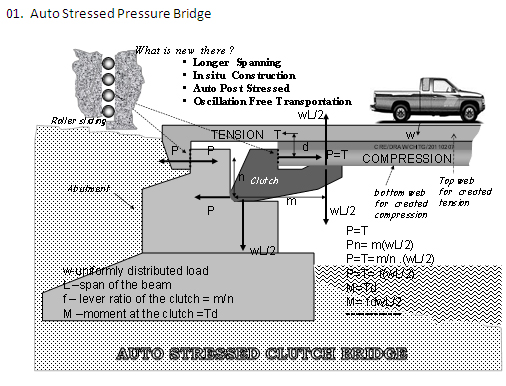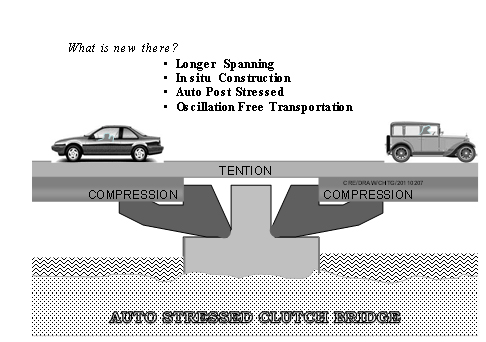Arch type stone bridge in highway engineering is known as the oldest art initiated during the period of Roman Empire. Engineers in the past however, could have experienced that beams of wood or stone could not be applicable for longer spans and hence stone arch bridges were created to avoid tension in load bearing bridges. But too many piers to support the array of arches also create unnecessary difficulties in bridge construction because the river flow is heavily disturbed by frequent pier application as a disadvantage.
Concrete beam with steel reinforcement was the brilliant finding in the technology of bridge construction and long spans could be covered by it, without frequent application of piers across a river.
Technology of stressing the load bearing concrete beams before or after casting, is the modern development in the art but problems are still not over because deflection of beams and due vibration of bridges with moving loads have to be overcome somehow. Besides that transport and handling of huge pre-stressed members still remain as difficult laborious and costly components in bridge construction in distant rural localities.
The invention ‘Auto Stressed Clutch Bridge’ introduces a novel technique to overcome such problems by a load bearing beam of which the tensile stresses are transferred to the top region of the member by end clutches.
Advantageous effects over the prior art;
I. Longer spanning ability:
With use of same amount of concrete, steel etc. a longer span could be bridged by this novel technique as the biggest advantage over the prior art.
II. Easy applicability:
No pre or post tensioning is required and the entire bridge structure can be cast at the site (as insitu con.) as an advantage. Also the difficulty in transporting huge pre cast members to distant rural areas is overcome by this novel technique.
III. Passenger comfort over the bridge:
No deflection of beams could be expected because the growth of end moments is proportionate to the applied loads and therefore the bridge is not vibrating vigorously providing comfort for passengers.


